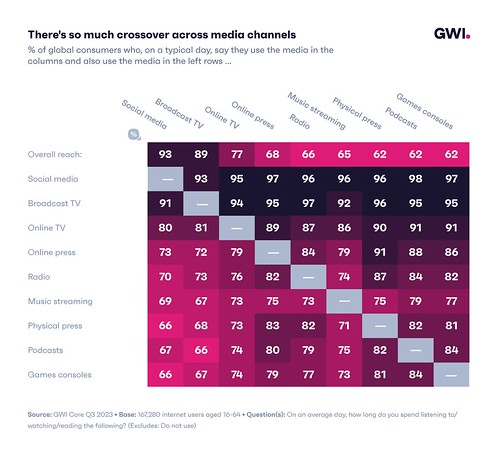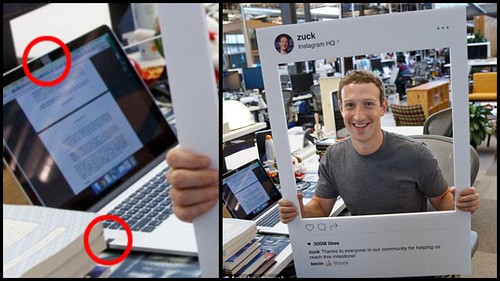The IT director is seeing a return to power and its thanks to the power of hackers and AI. The smartphone, the resurgence of Apple and SaaS saw IT decisions become more organic thanks to increased access to online services that provided better features than traditional enterprise software companies and the rise of knowledge working. IT teams found management of mobile devices onerous and faced hostile users.
This meant that the IT director became less important in software marketing. A decade ago marketing had pivoted to a bottom up approach of ‘land and expand’. This drove the sales of Slack, Monday.com and MongoDB.
Two things impacted this bottom up approach to enterprise innovation:
- Cybercrime: ransomware and supply chain attacks. Both are not new, ransomware can be traced back to 1989, with malware known as the AIDS trojan (this had much cultural resonance back then as a name). Supply chain attacks started happening in the 2010s with the Target data breach and by 2011, US politicians were considering it a security issue. Over COVID with the rise of remote working, the attacks increased. The risk put the IT director back in the firing line.
- AI governance: generative AI systems learn from their training models and from user inputs, this led to a wide range of concerns from company intellectual property leaving via the AI system, or AI outputs based on intellectual property theft.
The most immediate impact of this is that the IT director is becoming a prized target on more technology marketers agendas again. This takes IT director focused marketing from back in the 1980s and the early 2000s with a top-down c-suite focus including the IT director. This implies that established brands like Microsoft and IBM will do better than buzzier startups. It also means I am less likely to see adverts for Monday.com in my YouTube feed over time.
This doesn’t mean that the IT director won’t be disrupted in other parts of his role as machine learning facilitates process automation in ways that are continuing to evolve.
Target data breach: Why UK business needs to pay attention | Computer Weekly
Supply chain security – DHS finds imported software and hardware contain attack tools | Inquisitr
Software is not dead | Kevin Xu
The bizarre story of the inventor of ransomware | CNN Business
Silicon Valley steps up staff screening over Chinese espionage threat
Business
Brands plan for a quiet Pride Month | News | Campaign Asia – The hesitation around Pride may also be related to executives’ increasing reluctance to speak out on social issues more broadly. Wolff pointed to Edelman’s Trust Barometer, which found that 87% of executives think taking a public stance on a social issue is riskier than staying silent. “Essentially, nine out of every 10 executives believe that the return on investment for their careers is not worth the support during this turbulent time,” said (Kate) Wolff. “This is clearly problematic for both the community and the progress we have made in recent years.”
Apple, Microsoft, SpaceX talent jumped ship after return-to-office mandates, study reveals | Fortune
China
Resignation Bordering on Despair – by Stephen Roach – economics of China and Hong Kong – more here: An Audacious Wake-Up Call – by Stephen Roach. Roache was the head of Morgan Stanley Asia.
China’s Global Ambitions – Part 1: A Violent Thrust Into Modernity – Preston Stewart – quite a nice China primer.
Consumer behaviour
Brands have misjudged the politics of youth | WARC – STRAT7 Research on how woke has become a negative terms for some as the term takes on ambiguity and polarity in societal discussions.
Why Companies Should Add Class to Their Diversity Discussions | HBR
What triggers brand boycotts? | WARC | The Feed – interesting research, but I would like to have seen China and South Korea in this due to the interest boycott behaviours that happen.
People Like Harrison Butker Are Taking Over Catholicism | The New Republic – looks like the evangelical catholics
An uneven commute | Mastercard Services
The death (again) of the internet as we know it | Noah Smith
THE SILVER CULTURE PROJECT – interesting project by BBH London though the age bias in marketing and adland is strong
Culture
Rebecca F Kuang: ‘I like to write to my friends in the style of Joan Didion’ | The Guardian
Design
Pedestrians Aren’t Hearing EVs on the Road | Extremetech – engine sounds in EVs would be a solution. Imagine if your EV could sound like the dignified rumble of a 1980s vintage Mercedes 560 SEL?
Nokia’s Classic 3210 Returns With Modern 25th-Anniversary Upgrades – DesignTAXI.com
IKEA hosts flea markets at European stores to ‘keep good things going’ | Trendwatching – its a pity that most Ikea products are now built for margin rather than quality.
Emoji history: the missing years ⌘I Get Info
Making the Band: An Oral History of the Livestrong Bracelet | Texas Monthly – history of the early 2000s social object
Economics
The Foundation of American Folly – by N.S. Lyons
Finance
StanChart’s Iran transactions subject of fresh whistleblower claims | FT
Chinese underground banks shaking up money laundering.
FMCG
CosMc’s: Brand Launch — Macaihah Broussard • Art director
Nestlé Introduces Vital Pursuit Brand to Support GLP-1 Users, Consumers Focused on Weight Management
Gadgets
Oral-B Hopes You Didn’t Use Your $230 Alexa-Enabled Toothbrush | Hackaday
Germany
German parliament will stop using fax machines : NPR – I knew fax machines were still important in Austria and Japan. Interesting to see that they were still important in Germany as well
Health
Benchmarks for digital marketing in the pharmaceutical industry – phamax Digital
Hong Kong
This city never slept. But with China tightening its grip, is the party over? | CNN Business
China’s Economic Worries Spur a Different Kind of Shopping Spree – WSJ – sales of Hong Kong based insurance policies surge again representing middle class capital flight.
Ideas
Is human creativity fading away? – by Joel Stein and The age of average — Alex Murrell
Pop Culture Has Become an Oligopoly – by Adam Mastroianni
Tony Robbins on How to Make Tough Decisions – Real Leaders
IPA | Top Ten Practical Stress Busters | IPA
Is modern life bad for creativity? | LinkedIn – Contagious on Sir John Hegarty’s opinion on how modern life is making great advertising campaigns harder:
- A lack of shared cultural references
- Pivot towards sales due to wealth of customer data
- Remote working preventing collaboration
IP
Harley-Davidson sues Next over alleged trademark infringement | FT
Luxury
Chinese Firms Are Investing Heavily in Whisky Market | Yicai Global – Although international liquor giants have developed the local whisky consumption market for many years, the market penetration rate of overseas spirits in China, including whisky, is only about 3 percent. This means domestic whisky producers will need to develop new consumption scenarios, Yang said. Whisky consumption in China centers mainly around nightclubs, gift-giving and tasting events held by affluent consumers, Yang noted, but in these scenarios, imported whisky brands with a long history tend to be more popularly accepted,, so it will be difficult for domestic rivals to compete. According to the latest report from alcohol market analysts IWSR, China’s whisky market was worth CNY5.5 billion (USD758 million) last year, having grown more than fourfold over the past 10 years. It is expected to reach CNY50 billion (USD6.9 billion) in the next five to 10 years.
Yoox Net-a-Porter exits China to focus on more profitable markets – Multi-brand luxury clothing sales platform Yoox Net-a-Porter is closing its China operations, this against a backdrop of other brands also pulling out of Chinese e-commerce including Marc Jacobs fragrances. The corporate line from Richemont was “in the context of a global Yoox Net-a-Porter plan aimed at focusing investments and resources on its core and more profitable geographies”.
LVMH’s unit put under court administration in Italy over labour exploitation | Reuters – shines a light on the eco-system of Chinese manufacturers inside Italy that use Chinese and immigrant staff to cut costs
Step Into The Next Chapter Of Oakley’s Future
Fashion Matters on the big trends from FT Business of Luxury conference and Watch live: Kering deputy CEO Francesca Bellettini in conversation with Jo Ellison
Ignite the Scent: The Effectiveness of Implied Explosion in Perfume Ads | the Journal of Advertising Research – Scent is an important product attribute and an integral component of the consumption experience as consumers often want to perceive a product’s smell to make a well-informed purchase decision. It is difficult, however, to communicate the properties of a scent without the physical presence of odorants. Through five experiments conducted in a perfume-advertising context, our research shows that implied explosion, whether visually (e.g., a spritz blast) or semantically created, can increase perceived scent intensity, subsequently enhancing perceived scent persistence. It also found a positive effect of perceived scent persistence on purchase intention. In conclusion, the research suggests that implied explosion can be a powerful tool for advertisers to enhance scent perception, consequently boosting purchase intention.
Marketing
How SEO moves forward with the Google Content Warehouse API leak | Searchengineland, original leak here: An Anonymous Source Shared Thousands of Leaked Google Search API Documents with Me; Everyone in SEO Should See Them – SparkToro and How independent websites are dealing with the end of Google traffic – The Verge
CHARLOTTE TILBURY CELEBRATES A YEAR IN GAMING • Women in Games
The Problem With Behavioral Nudges | WSJ
Touchpoints and the Omnichannel Revolution | BCG
Marketers’ Meta habit is reshaping the ad industry | WARC
Bank on it: Financial media networks are the next big opportunity – The Media Leader
Mat Baxter’s Huge turnaround job | Contagious – interesting perspective on his time at Huge. What I can’t square it all with is what we know about marketing science and declining effectiveness across digital media
Celebrate the Unique Ways You Listen With ‘My Spotify’ — Spotify – a judo move on the sinister nature of algorithms in consumers lives
On my LinkedIn, I couldn’t escape from the Cannes festival of advertising. Partly because one of the projects I had been involved in was a shortlisted entry. One of the most prominent films was Dramamine’s ‘The Last Barf Bag: A Tribute to a Cultural Icon’. It was notable because of its humour, which was part of this years theme across categories.
Materials
Renewcell secures a future | Vogue Business – manufacture a fibre that uses recycled cotton instead of wood pulp in viscose
震災復興から生まれた刺し子プロジェクトをブランドに! 15人のお母さんの挑戦! – CAMPFIRE (キャンプファイヤー) – ancient Japanese craft – KUON and Sashiko Gals are part of a new generation of designers keeping the traditional Japanese technique of sashiko alive. And together, they are bringing the decorative style of stitching to our favorite sneakers (including techy Salomons!). Sashiko is a type of simple running stitch used in Japan for over a thousand years to reinforce fabrics. It’s typically done with a thick white thread on indigo fabric and made into intricate patterns.
Media
The new dot com bubble is here: it’s called online advertising – The Correspondent – old article but useful in the way it calls BS on much of the cheerleading for online advertising.
The Epoch Times faces a federal money laundering indictment : NPR
Canon made a special lens for the Apple Vision Pro’s spatial videos – The Verge
Pinterest ads set for 17.1% growth to reach $4.2bn next year | WARC | The Feed
Streamers like Netflix, Max, and Peacock are raising prices — here’s why | Yahoo! Finance and The Dream of Streaming Is Dead – The Atlantic
The Rot-Com Bubble | Ed Zitron
CEOs Go to War Against Creatives – by Ted Gioia
Meet AdVon, the AI-Powered Content Monster Infecting the Media Industry
DVD special features draw fans back to physical media. | Slate – a digital roadmap for streaming services and also shows the power of physical artefacts
Adtech vendors join forces for European Programmatic TV Initiative – The Media Leader
The New York Times And Instacart Integrate For Shoppable Recipes | AdExchanger
Online
Apple set to be first Big Tech group to face charges under EU digital law | FT – interesting that they are going after Apple first. Japan moves the same way: Japan law forces third party App Stores on Apple & Google | Apple Insider
Labour raced to outspend Tories online before spending caps kicked in | FT
Nationalism in Online Games During War by Eren Bilen, Nino Doghonadze, Robizon Khubulashvili, David Smerdon :: SSRN – We investigate how international conflicts impact the behavior of hostile nationals in online games. Utilizing data from the largest online chess platform, where players can see their opponents’ country flags, we observed behavioral responses based on the opponents’ nationality. Specifically, there is a notable decrease in the share of games played against hostile nationals, indicating a reluctance to engage. Additionally, players show different strategic adjustments: they opt for safer opening moves and exhibit higher persistence in games, evidenced by longer game durations and fewer resignations. This study provides unique insights into the impact of geopolitical conflicts on strategic interactions in an online setting, offering contributions to further understanding human behavior during international conflicts.
The Internet: Now you see it, now you don’t
Bumble buys community building app Geneva to expand further into friendships | TechCrunch
TikTok ‘law violations’ complaint referred to US justice department | FT
Gambling addiction’s growing grip on the frontlines – ripping through Ukrainian armed forces and causing havoc at home
Retailing
Sellers Call Amazon’s Buy Box ‘Abusive.’ Now They’re Suing | WIRED
eBay will no longer accept American Express cards over ‘unacceptably high’ fees – The Verge
McDonalds removes AI drive-throughs after order errors – BBC News
Security
Huawei exec concerned over China’s inability to obtain 3.5nm chips, bemoans lack of advanced chipmaking tools | Tom’s Hardware – this is rather different to the picture that The Economist portrays of an all-conquering Huawei: America’s assassination attempt on Huawei is backfiring | The Economist
The Stanford Internet Observatory is being dismantled | Platformer
The West Coast’s Fanciest Stolen Bikes Are Getting Trafficked by One Mastermind in Jalisco, Mexico | WIRED – “Not so long ago, bike theft was a crime of opportunity—a snatch-and-grab, or someone applying a screwdriver to a flimsy lock. Those quaint days are over. Thieves now are more talented and brazen and prolific. They wield portable angle grinders and high-powered cordless screwdrivers. They scope neighborhoods in trucks equipped with ladders, to pluck fine bikes from second-story balconies. They’ll use your Strava feed to shadow you and your nice bike back to your home.” – not terribly surprising, you’ve seen the professionalisation and industrialisation in theft across sectors from shoplifting, car theft and watch thefts so this is continuing the trend.
Fortinet Acquires Lacework | Forrester Research – looks like its a move to prevent supply chain hacks.
China’s Nvidia Loophole: How ByteDance Got the Best AI Chips Despite U.S. Restrictions — The Information – interesting that Oracle have been caught sanction busting and Chinese firms building US data centres that Nvidia can shop to.
West grapples with response to Russian sabotage attempts | FT
“Everyone is absolutely terrified”: Inside a US ally‘s secret war on its American critics – Vox – Indian black ops in the US and Canada
NVIDIA technology found in Russian military drones | Defence Blog
Armed gangs stage bank heists in Gaza | FT
Software
What’s going on with AI in Sequoia? – The Eclectic Light Company
Google AI Gemini parrots China’s propaganda – by Wenhao Ma
Apple Intelligence for iOS 18 is here. But can Apple beat AI rivals? | Quartz
Anthropic course on Claude generative AI · GitHub
Consumer Trends unveils the AI-Powered Future – Ericsson – god this is dark.
Aptoide’s iOS game store launches on Thursday – The Verge
The Top 100 Gen AI Consumer Apps | Andreessen Horowitz
Which media companies have made deals with OpenAI? and Media Companies Are Making a Huge Mistake With AI – The Atlantic – sold themselves cheap.
Microsoft can remember it for you wholesale – net.wars and Windows 11 Recall AI feature will record everything you do on your PC | BleepingComputer
Apple plots creating AI ‘black box’ for iCloud | AppleInsider
Future of Software development/SDLC with AI and Gen AI | Forrester Research
OpenAI Just Gave Away the Entire Game – The Atlantic – The Scarlett Johansson debacle is a microcosm of AI’s raw deal: It’s happening, and you can’t stop it. This is important not from a technology point of view, but from the mindset of systemic sociopathy that now pervades Silicon Valley.
Goldilocks Agents | Sequoia Capital – the quickening evolution of more capable and reliable AI agents.
Apple Intelligence is Right On Time – Stratechery by Ben Thompson – Apple’s orientation towards prioritizing users over developers aligns nicely with its brand promise of privacy and security: Apple would prefer to deliver new features in an integrated fashion as a matter of course; making AI not just compelling but societally acceptable may require exactly that, which means that Apple is arriving on the AI scene just in time.
Style
Can the runaway Hoka boom last? FT
‘Rare, vintage, Y2K’: Online thrifters are flipping fast fashion. How long can it last? | Vogue Business – as secondhand shopping becomes increasingly commonplace, this latest outburst brings to light the subjectivity of resale. What determines an item’s worth, especially in an age of viral micro-trends and heavy nostalgia? Is it ethically moral to set an item that’s the product of fast fashion — long criticised for not paying workers fairly — at such a steep upcharge, and making profit from it? If someone is willing to pay, does any of it matter?
Tools
YouTube Channel Statistics – ViewStats
Web of no web
HyperCinema | Hyper-personalized AI experiences for global attractions – although this is aimed at shopping mall events and theme parks, I could also see it being used in B2B contexts at trade shows and conferences.
Congress unconvinced by Space Force GPS resiliency plan • The Register










